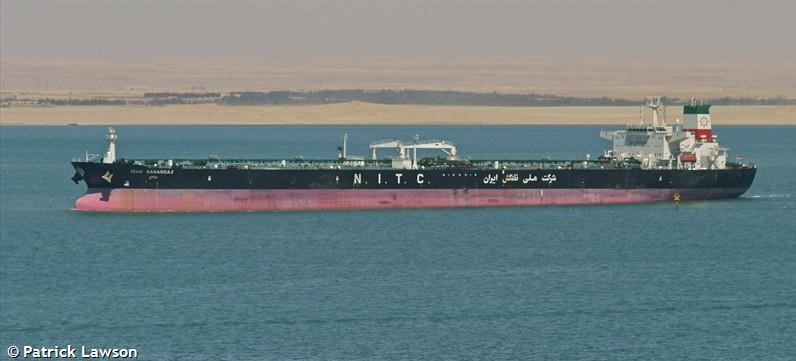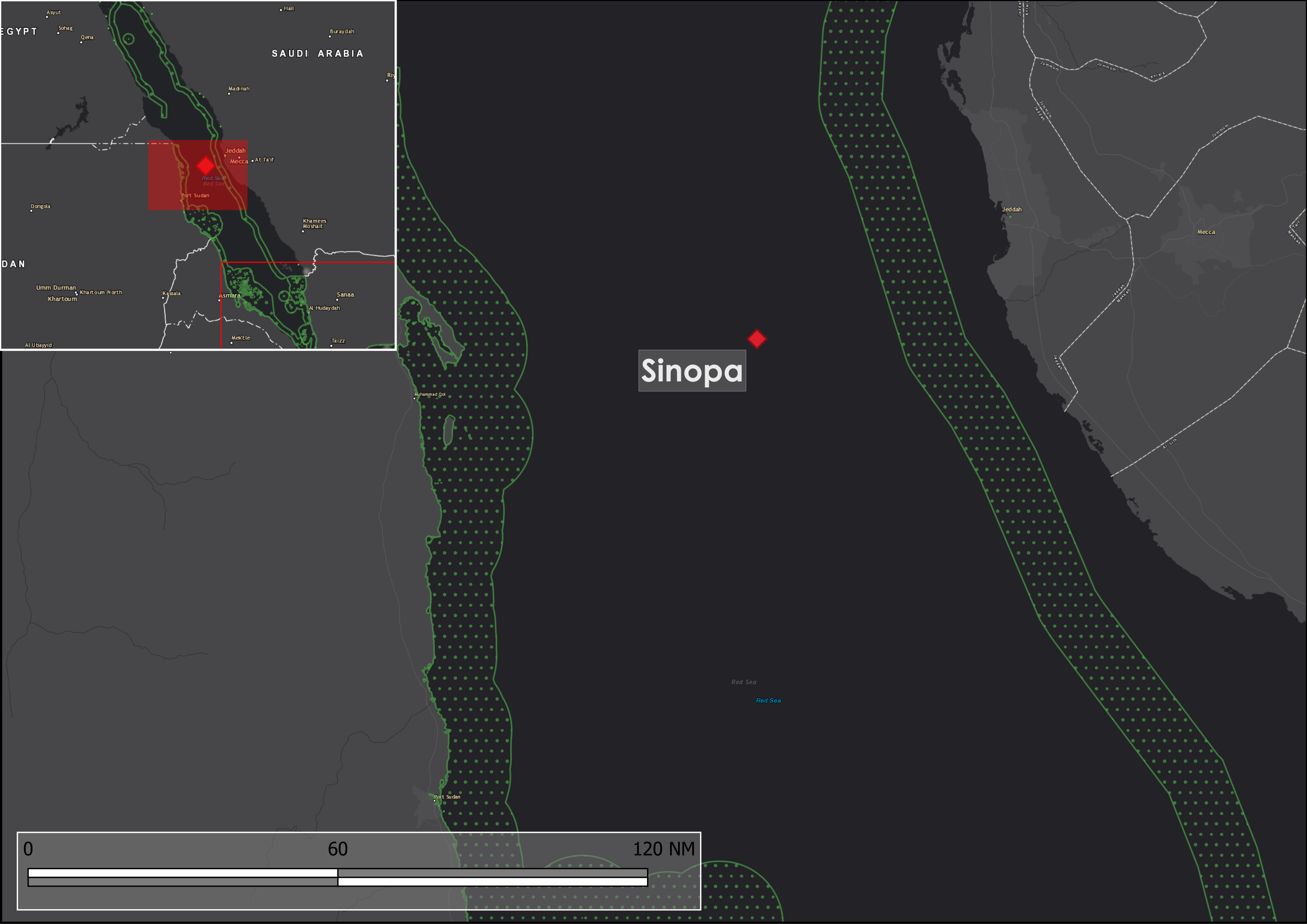Incident
Possible Attack
DTG
11 Oct 2019
Position
21°4’34” N 38°20’46” E
Ship Dimension
274m x 48m 81479GT
Ship Cargo
Crude Oil
Location
Approximately 55Nm SW of Jeddah Red Sea
Source Confidence Level
N/A

What Exactly Happened
Incident Overview
Reports suggest that an explosion has inflicted damage on an Iranian oil tanker, which was transiting the Red Sea. Iranian state media sources have so far indicated that the vessels storerooms were damaged, and that an oil leak into the surrounding seas has occurred.
Iran has asserted that the vessel was hit by two missiles off the Saudi coast, however this assertion has not yet been confirmed by any third party. Preliminary reports suggest that the vessel involved in the incident is the Iranian-flagged MT Sibiti however despite Iranian state media claiming the vessel was struck by ‘two missiles, fired from the Eastern Red sea area’ this vessel appears to show little indication of such activity as she continues to transit at 10kts towards the Southern Red Sea. Another potential vessel that may have been involved is the MT Sinopa, which was en route to Suez and believed to be laden. An exact location for Sinopa at the time of the incident cannot yet be verified, as the vessels last location via AIS is 11 hours out of date, but the incident is believed to have occurred 60 miles from the Saudi port of Jeddah.
Our Experts Say
Dryad Analysis
So far no response to the incident has been received from the US (which has the US Navy’s 5th fleet in the region) or Saudi Arabia. The incident has occurred within the context of similar incidents in the Bab al Mandab, with Saudi tankers previously being targeted by Houthi rebels in the vicinity of the Hanish Islands, however these incidents were exclusively against Saudi vessels. This latest incident, if confirmed to be an act of aggression is highly likely to be part of the wider narrative of deteriorating relations between Saudi and the US and Iran. Further still this incident would present a further and more dangerous escalation in a series of events that have already seen attacks in the Strait of Hormuz earlier this year (albeit targeting non-Iranian flagged vessels), and the recent drone attack on Saudi oil infrastructure, which has been attributed to either Iran itself or their Yemeni proxies, the Houthis.
Iran has claimed that the incident is an act of terrorism, however it has not yet claimed which party it believes is responsible for the attack. With the proximity to the port of Jeddah, it would be a plausible to conclude that Saudi Arabia could have been involved within the incident, or at the very least, the incident is intended to create the perception of Saudi involvement. In terms of Saudi interests within the region, it remains unclear why Saudi would seek to target Iran in this manner. An attack of relatively low sophistication with limited and almost negligible strategic gain would be highly irregular and not serve any Saudi strategic narrative. Further still it is highly unlikely that the Saudi’s would risk an ecological disaster in an area of strategic significance such as the Red Sea.
The waters are further muddied by Sinopa’s AIS, which had not reported since 15 Aug 19, and then transmitted a signal in the hours before the explosion. Were Iran to have been responsible for this seemingly self-inflicted incident, it would represent a geopolitical encirclement of Saudi interests, which are now compromised to the North by Iraq, to the East by attacks on its oil infrastructure and within the Strait of Hormuz, to the South by Houthi rebels and now to the West by a seemingly new incident in the Southern Red Sea.
A more thorough conclusion for who is responsible will be obtained when further evidence is released, in particular pictures of the vessel damage which would suggest the direction which the attack emanated from.
It is likely that the attack in part is designed to raise the threat threshold in the Southern Red Sea, therefore leading to a similar escalatory environment to which has been seen in the Strait of Hormuz and wider Gulf of Oman. In addition, it, if confirmed as an attack, there may be the intent to draw US coalition assets beyond the confines of the Persian Gulf and stretch their already limited effectiveness.
This current incident also has similar hallmarks to an incident in the Red Sea in May 19 involving the Iranian MT Happiness1, which whilst officially reported as facing maintenance issues, the incident maintained the hallmarks of a potential explosive incident.
Recommendations
If confirmed as an attack, this presents a significant escalation of intent within the region and retaliatory action is likely. It is likely that the region, have being stable for the last month, will face another period of increasing maritime threats, as the Iranian and Saudi geopolitical stand-off continues. It is likely that Iran will wish to respond to this event, therefore the threat to Saudi-flagged vessels within the Strait of Hormuz is assessed as being HIGH. At his time the risk to non-Saudi flagged vessels is unclear, however vessels of states aligned with the US Sentinel operation are assessed to be at HEIGHTENED risk without specific threat. Vessels should remain to be proactive in ensuring their security and should engage thoroughly with local security and/or naval forces should this be required. In addition, when transiting geo-politically sensitive waters, it is vital that geo-positioning is confirmed through failsafe methods to avoid any potential incident as a result of falsified GPS.
Dryad will continue to monitor this situation, and shall report as the situation develops. It is important at this time to stress that a number of variables surrounding the incident are still unknown, and a recalibration of threat perception should not be conducted until further details are ascertained.


